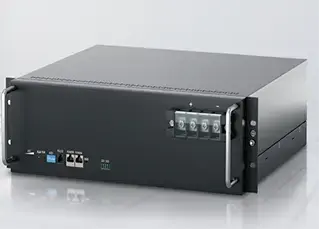Utility Solar Storage: Revolutionizing Urban Energy Networks
As urbanization continues to expand at an unprecedented rate, the pressure on energy networks to keep up with the growing demands is increasing exponentially. To address this challenge, utility solar storage has emerged as a game-changer in the world of renewable energy. This innovative solution combines the power of utility-scale solar farms with advanced storage technologies, enabling urban energy networks to store excess solar energy for later use. In this blog post, battery energy storage system manufacturers will explore the concept of utility solar storage and its potential to transform urban energy networks.
The Rise of Utility Solar Storage
In recent years, utility-scale solar farms have become a common sight in various parts of the world. These large-scale solar installations are capable of generating a significant amount of electricity, powering thousands of homes and businesses. However, the intermittent nature of solar power poses a challenge for its integration into urban energy networks. Solar energy production is at its peak during daylight hours, but the demand for electricity remains constant throughout the day. This is where utility solar storage comes into play.
How Utility Solar Storage Works
Utility solar storage involves the use of advanced battery systems to store excess solar energy generated during peak production hours. The utility scale battery can be charged when solar power output exceeds the current demand, and the stored energy can be discharged when the sun goes down or during periods of high energy demand. By combining solar power with storage, utility companies can optimize energy usage, reduce reliance on conventional power sources, and enhance the overall reliability of the grid.
One of the key benefits of utility solar storage is its ability to smooth out fluctuations in solar power generation. By storing excess energy, utility companies can ensure a stable supply of electricity to urban energy networks, even when weather conditions or solar output vary. This helps to address one of the main criticisms of solar power - its dependency on sunlight - and makes it a more reliable source of energy for urban areas.
Furthermore, utility solar storage can also contribute to grid resilience during emergencies or natural disasters. By having a reserve of stored solar energy, communities can remain powered even when the grid is down, ensuring essential services such as hospitals and emergency response centers can continue to operate. This aspect of utility solar storage highlights its potential to improve the resilience and reliability of urban energy networks.
In conclusion, utility solar storage has the potential to revolutionize urban energy networks. By combining the power of utility-scale solar farms with advanced storage technologies, excess solar energy can be stored and utilized during periods of high demand or when solar production is limited. This not only improves the reliability and resilience of urban energy networks but also contributes to reducing reliance on conventional power sources. As the world continues to transition towards a more sustainable future, utility solar storage will undoubtedly play a significant role in shaping the energy landscape of urban areas.
BESS Utility technology is increasingly important as the world transitions towards renewable energy and seeks ways to enhance grid reliability and efficiency.




 EN
EN
 fr
fr  de
de  es
es 


